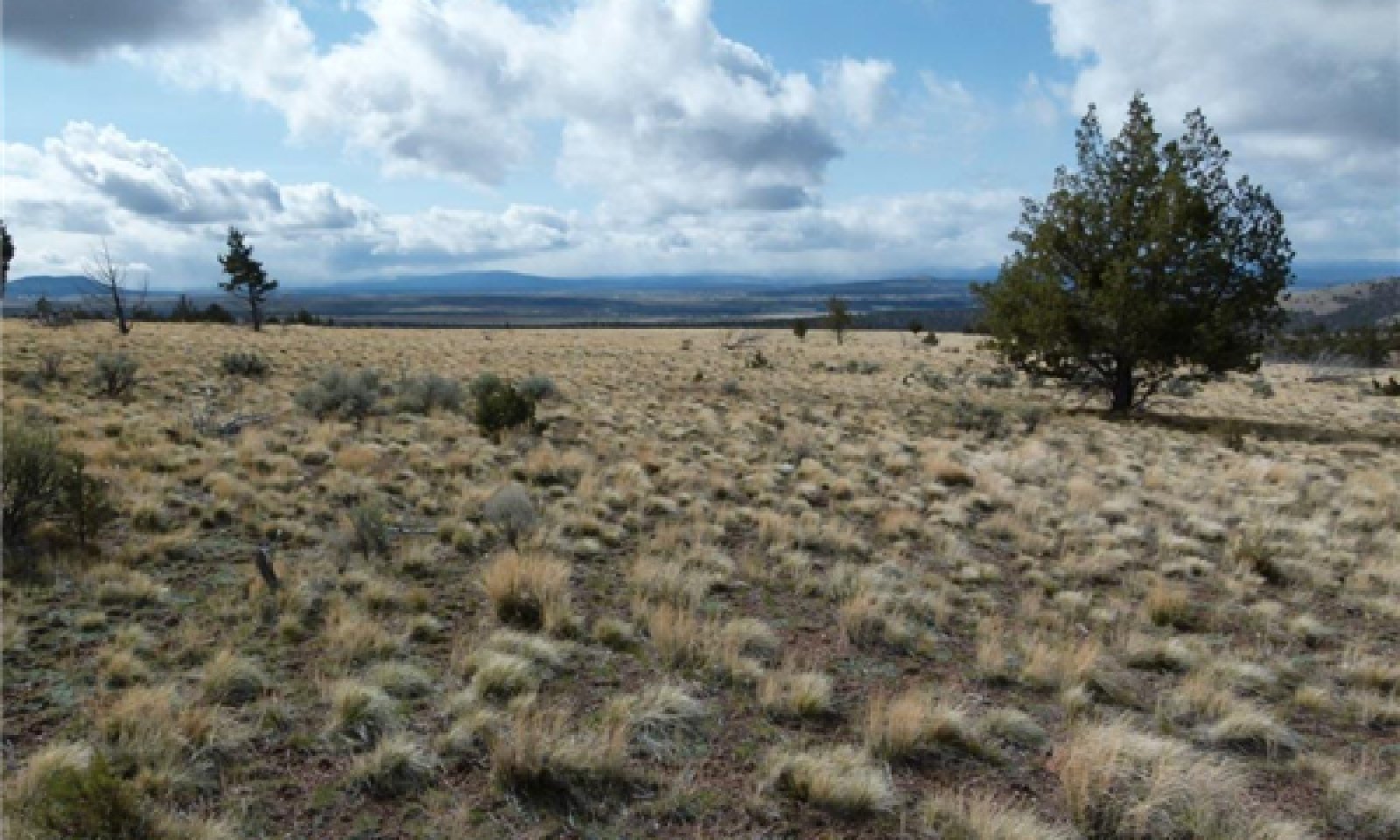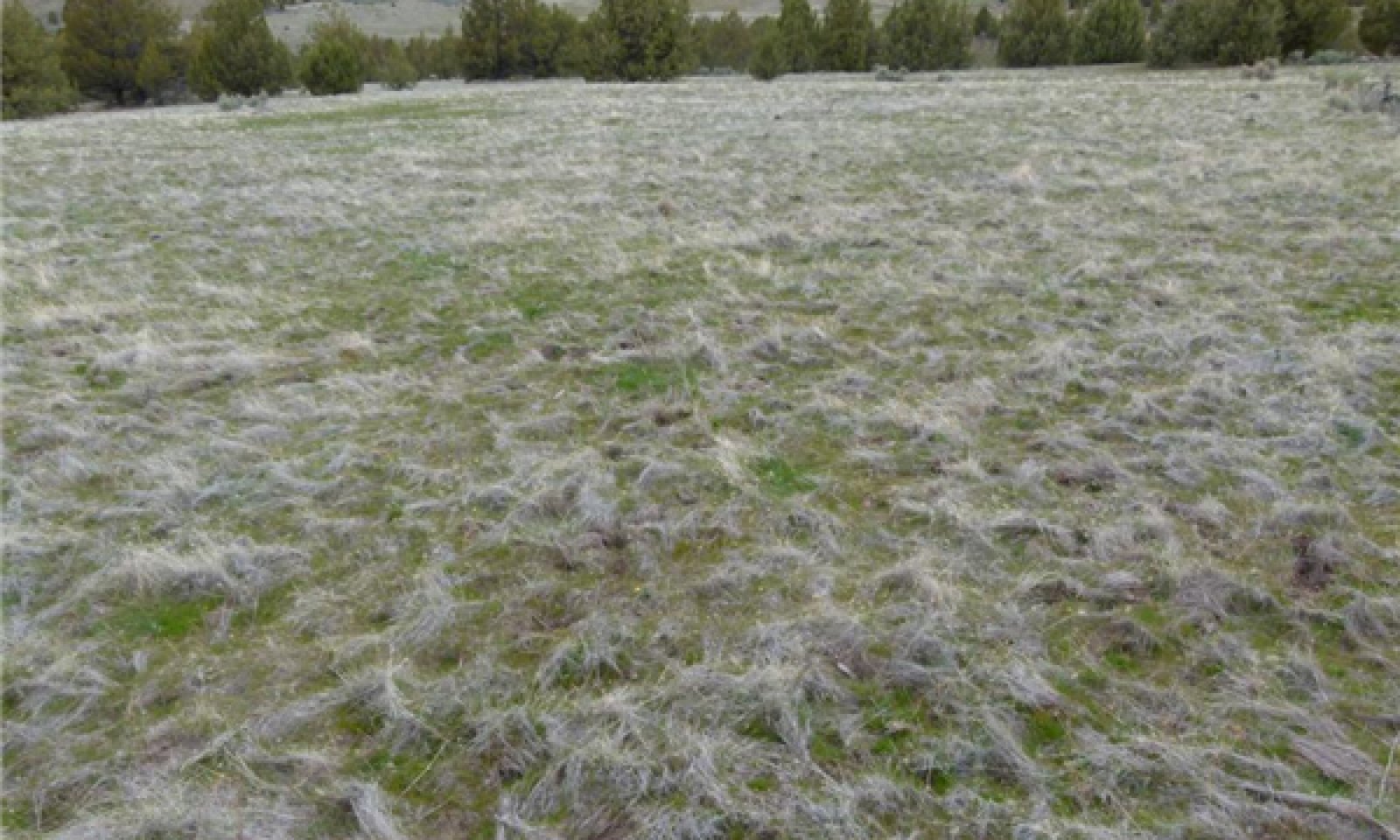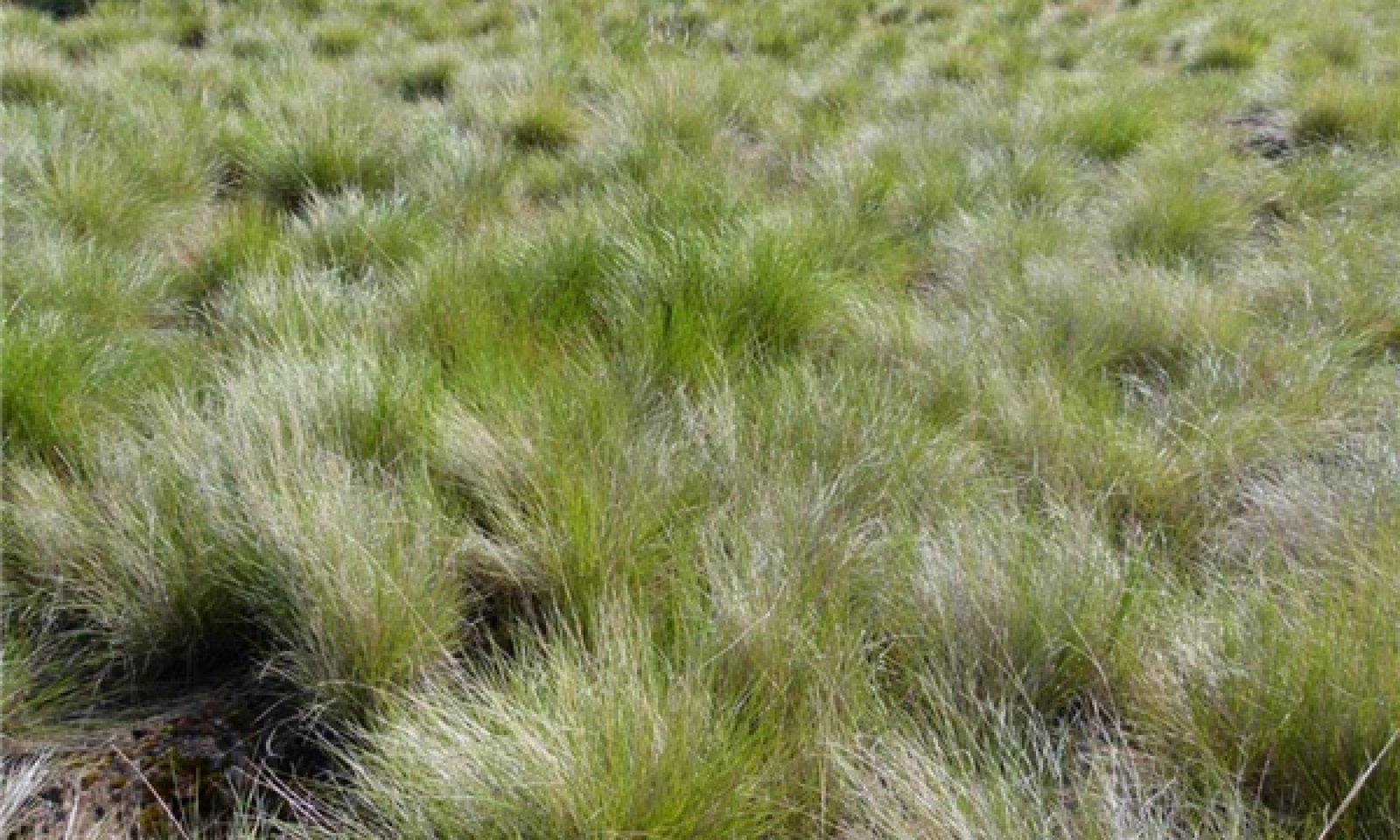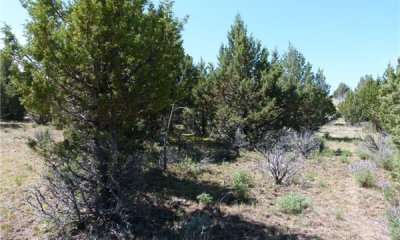
JD Clayey 12-16 PZ
Scenario model
Current ecosystem state
Select a state
Management practices/drivers
Select a transition or restoration pathway
- Transition T1A More details
- Transition T2A More details
- Transition T2B More details
- Restoration pathway R2A More details
- Restoration pathway R3A More details
- Transition T3A More details
- Restoration pathway R3B More details
- Restoration pathway R4A More details
- Transition T5B More details
- Transition T5A More details
-
No transition or restoration pathway between the selected states has been described
Target ecosystem state
Select a state
State 1
Reference



Description
This state is dominated by bluebunch wheatgrass with minor amounts of shrubs. Idaho fescue, Sandberg bluegrass and prairie junegrass are other common native grasses. Ecological processes of this state are driven by the perennial grass community. These plants maintain the nutrient cycles, organic matter accumulation, and hydrologic functions in their rooting depth. Energy capture by cool season perennial grasses is limited primarily to spring and early summer. As the deeper rooted woody plants increase, the nutrient cycles, organic matter accumulation, and hydrologic functions are extended deeper into the soil profile. Energy capture is extended through the summer and fall seasons.
Submodel
State 2
Invaded




Description
This state of JD Clayey 12-16 PZ ecological site is representative of an invaded state with the introduction of non-native annual grasses as well as the encroachment of native woody species such as western juniper and basin big sagebrush. Bitterbrush, rabbitbrush, horsebrush, and broom snakeweed are other common shrub species. Bluebunch wheatgrass and Idaho fescue are declining in dominance and Sandberg bluegrass is favored but is in competition with exotic non-native annual grasses such as cheatgrass (Bromus tectorum) and medusahead (Taeniatherum caput-medusae). Ecological processes of this state are driven by the shrub community. Soil moisture is improved through the capture of snow in the winter months but nutrient cycling and organic matter is decreased compared to the reference state. The three phases in this state are driven by the presence or absence of fire as well as drought and/or repeated, excessive herbivory.
Submodel
State 3
Juniper Encroached



Description
This State is a tree dominated state with woodland successional phase II and III of western juniper present. Shrub communities dominated by basin big sagebrush and bitterbrush have declined and remnant shrubs that are still present in this state include rabbitbrush, horsebrush, and broom snakeweed. Bluebunch wheatgrass and Idaho fescue cover declines and they are diminished to occupying the more moist (shaded) microsites. Sandberg bluegrass is the primary dominant grass that remains but it is in competition with non-native annual grasses such as cheatgrass and medusahead. Ecological processes in this state are driven by western juniper. Juniper is highly competitive for moisture capture having a taproot that averages 51 inches (130 cm) in depth and root-to-shoot ratios that decrease with age. Interception of rainfall by its dense canopy is another adaptation to its moisture competitiveness which allows it to out-compete species such as basin big sagebrush. Nutrients are captured for longer periods in above ground biomass and organic matter decreases as bare ground increases. Historically, when fire regimes were 10-25 years, juniper was restricted to protected microsites such as scattered rock outcrops and areas of shallow, rocky soils (ref.: Fire Effects Information System.) There are two plant communities in this state separated by their ability to carry a fire, the type of fire and the frequency of burn events.
Submodel
State 4
Annual



Description
This state is characterized by the dominance of non-native annual grasses. These grasses drastically change the natural fire cycles as well as the moisture and nutrient status of the soil. Cheatgrass, soft chess (Bromus mollis) and medusahead germinate in the fall and establish root systems that are able to elongate through the dormant season and capture early soil moisture which creates adverse growing conditions and effectively dries out the site for more desirable species. Medusahead is better adapted to clay surfaces and creates a thick thatch that lays flat on the soil surface and sheds any moisture to limit the ability of other competing species to survive. Annual grasses complete their growth by early summer and become prone to wildfires during the driest time of the year. They produce a continuous, fine fuel source that favors hot, quick moving fires. These flash fires create an ash, nitrogen-rich duff that harbors the profuse seed bank that the annuals produce in order to monopolize the next flush of precipitation. Soil organic matter decreases due to the loss of root mass produced by the deep-rooted perennials which are replaced by these shallow-rooted annual grasses. The invasion of annual grasses changes the historic fire frequency and results in the loss of shrubs such as sagebrush and other non-sprouting woody species.
Submodel
State 5
Seeded



Description
Seeding of this ecological site is common due to the favorable soil characteristics, a favorable moisture regime, and no slope limitations. Seeding alternatives will vary based on the state and community phase this site is in at the time of seeding.
Submodel
Mechanism
State 1 becomes vulnerable to invasion through prolonged disturbance and altered natural fire regimes. Disturbance can be from control of wildfire, prolonged and repeated herbivory or farming practices. Plant community phase 1.2 is "at risk" to cross into state 2 due to the continued increase of woody species and the introduction of non-native annual grasses. The encroachment and invasion results in a reduction in production and recruitment of deep-rooted perennial grasses and an increase in bareground. Surface soil compaction increases which reduces water infiltration and favors shallow rooted grasses and deeper-rooted shrubs.
Mechanism
Community phase 2.3 may cross a threshold into State 3 due to lack of fire and prolonged, repeated herbivory. Bare ground has increased and soil loss is occurring, increasing the space between herbaceous species that diminish the amount of fine fuels available to carry a fire. Shrubs in the understory are widely spaced and deep-rooted perennial grasses are becoming confined to beneath the tree and remaining shrub canopies. Shallow-rooted perennial grasses are the dominant understory species and non-native annual grasses are common.
Mechanism
Community phase 2.2 may cross a threshold to State 4 if intense or recurring fires and excessive repeated herbivory occurs. Mechanical seedbed preparation without adequate seedling establishment can also take this community phase over a threshold to a non-native annual grass state.
Mechanism
Any community phase in State 2 can be converted through mechanical seedbed preparation and planting to adapted deep-rooted perennial forage species. This ecological site is also prone to being farmed for dryland or irrigated crops due to the deep soils and the xeric moisture regime.
Mechanism
Mechanical brush control of juniper without treatment of other woody species will restore phase 3.1 to a community phase in state 2; the new community phase in state 2 will depend on the existence of relict deep-rooted perennial grass and shrubs species.
Mechanism
Mechanical control and burning of juniper in this state without the re-introduction of adapted perennial deep-rooted grass species will favor the increase of annual grasses which will change the fire regime and drive either community phase to state 4.
Mechanism
Mechanical control and burning or removal of juniper combined with seedbed preparation and seeding of adapted species will restore deep-rooted periennial grasses and change ecological process to drive either community phase to state 5.
Mechanism
Herbicide, mechanical seedbed preparation, and successful establishment of seeded desirable grasses & forbs will restore ecological processes and functions to favor either community phase to cross a threshold into State 5.
Mechanism
Encroachment of juniper and the loss of desirable seeded species through heavy and repeated herbivory would result in the transition to community phase 3.1.
Model keys
Briefcase
Add ecological sites and Major Land Resource Areas to your briefcase by clicking on the briefcase (![]() ) icon wherever it occurs. Drag and drop items to reorder. Cookies are used to store briefcase items between browsing sessions. Because of this, the number of items that can be added to your briefcase is limited, and briefcase items added on one device and browser cannot be accessed from another device or browser. Users who do not wish to place cookies on their devices should not use the briefcase tool. Briefcase cookies serve no other purpose than described here and are deleted whenever browsing history is cleared.
) icon wherever it occurs. Drag and drop items to reorder. Cookies are used to store briefcase items between browsing sessions. Because of this, the number of items that can be added to your briefcase is limited, and briefcase items added on one device and browser cannot be accessed from another device or browser. Users who do not wish to place cookies on their devices should not use the briefcase tool. Briefcase cookies serve no other purpose than described here and are deleted whenever browsing history is cleared.
Ecological sites
Major Land Resource Areas
The Ecosystem Dynamics Interpretive Tool is an information system framework developed by the USDA-ARS Jornada Experimental Range, USDA Natural Resources Conservation Service, and New Mexico State University.




